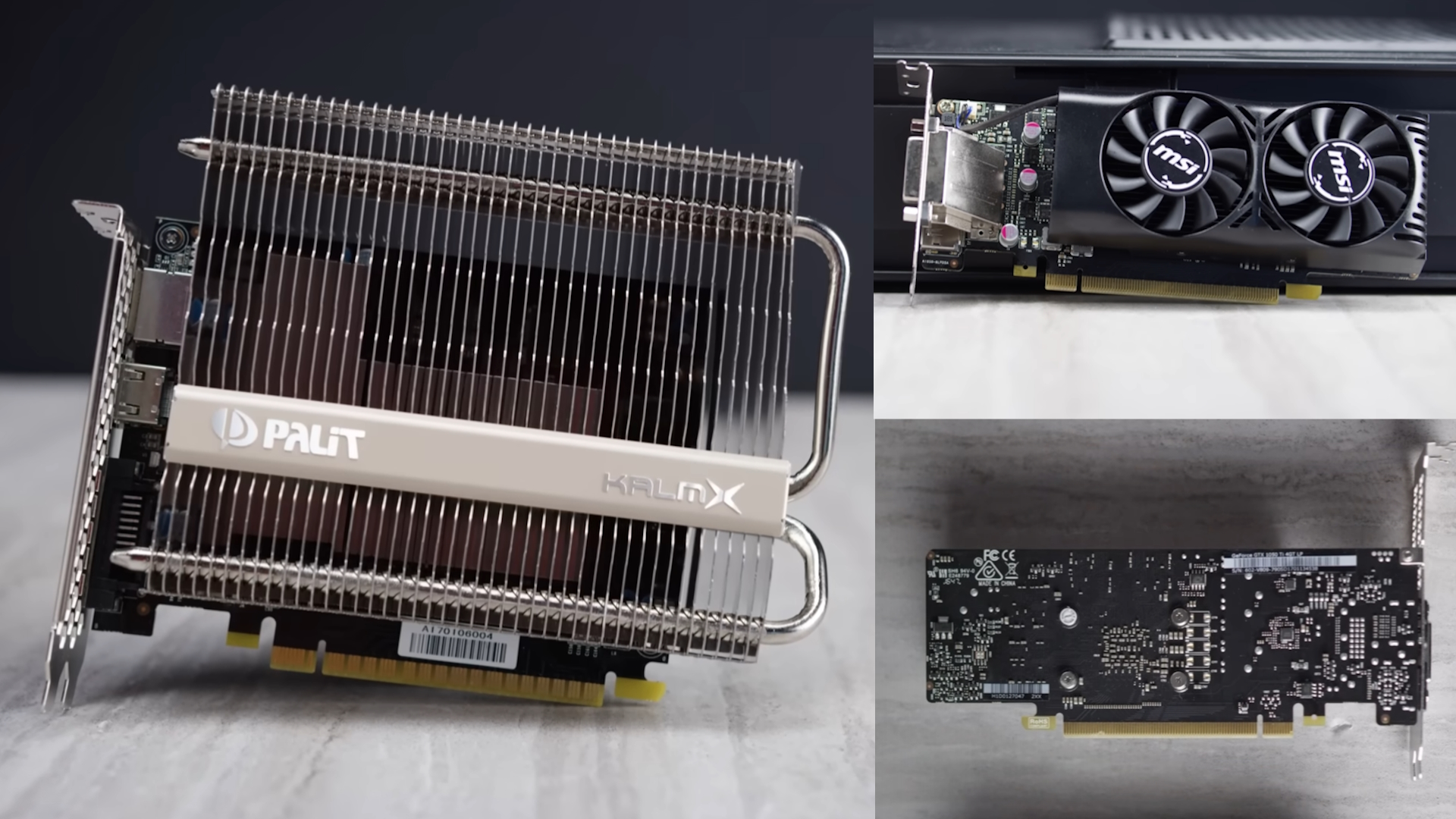[ad_1]
The world of customized RTX 4060 graphics playing cards is a wierd one for positive. From lovable, single-fan Mini-ITX GPUs, to pointless three-fan fashions, there is a 4060 for everybody it appears. And with the RTX 4060 Ti 16GB having launched in the present day to little enthusiasm, I believed it was a superb time to go over simply how experimental and unusual among the third-party designs for Nvidia’s lately launched RTX 4060 are, and why this card specifically affords such wild design variations.
Add-in boards like Lenovo’s Mini-ITX GeForce RTX 4060, at the moment restricted to the corporate’s personal prebuilt PCs, might in the future hit retailers and provides mini-PC fanatics all the advantages of a 40-series card in a small kind issue. We’re additionally seeing considerably pointless experimentation, resembling that of Gigabyte’s triple fan mannequin. If nothing else, it could actually at the least make your entry-level GPU look extra spectacular than it really is. Extra importantly, its one of many first low-profile RTX 4060 playing cards we have seen.
Then now we have Palit and its RTX 4060 with a bodily x8 PCIe connector… as a result of why the heck not? Whereas most up-to-date playing cards have used the usual PCIe x16 to hook as much as the motherboard, that hasn’t been vital for the Nvidia GeForce RTX 4060 and RTX 4060 Ti. A card like it will operate completely in any x8 slot, and might open up some flexibility choices in the case of part configuration.
So why are we seeing a lot extra variation in RTX 4060 AIB designs than different, higher-powered graphics playing cards?
Constructed round TSMC’s 4nm course of, the AD107 GPU on the coronary heart of the RTX 4060 is the fifth chip within the Ada lineup. It is an 8GB card with simply 24 streaming multiprocessors, and 3072 CUDA cores—a spec that sees it considerably missing within the face of its predecessor, the 3584 core, 12GB RTX 3060. We made it clear in our overview that the 4060’s spec sits nearer to what we anticipated from an RTX 4050, which makes the $299 price ticket look a bit on the steep facet.
However the place the spec falls brief, Nvidia has left a gap for experimentation.
Because of this GPU’s low energy operation, producers have a bit extra leeway to mess around in the case of aftermarket designs. We’re speaking a 115W TGP in comparison with the last-gen RTX 3060’s 170W, and performance-per-watt that dwarfs that of Nvidia’s last-gen playing cards.
The RTX 4060’s thermals prime out at 70°C, too, at the least that is the case with the Ventus Black 2X we examined lately. A candy spot that enables noise ranges to remain low, whereas sustaining these 2,460MHz increase clocks.

What higher strategy to benefit from all that headroom than to faff with the configuration within the identify of science?
Experimentation like this is not restricted to the RTX 4060, although. There have been a bunch of strange GTX 1050 Tis again within the day. The Palit GTX 1050 Ti KalmX with its freaky lookin’ passive cooler, for instance, or the low-profile MSI GTX 1050 Ti are each prime examples of AIB tomfoolery.
Modders have been using the experimentation prepare for AMD playing cards too, resembling somebody who created a neat passive cooler for the RX 6400. I’ve numerous respect for the pro-active vitality of “If the producers wont, then I bloody-well will.”
I for one am glad to see the experimentation is not useless. Not solely does it sustain a helpful custom, however it breathes life into an in any other case kinda drab entry to the RTX 40-series. In different phrases, sustain the strangeness, GPU producers.
[ad_2]
Source link



